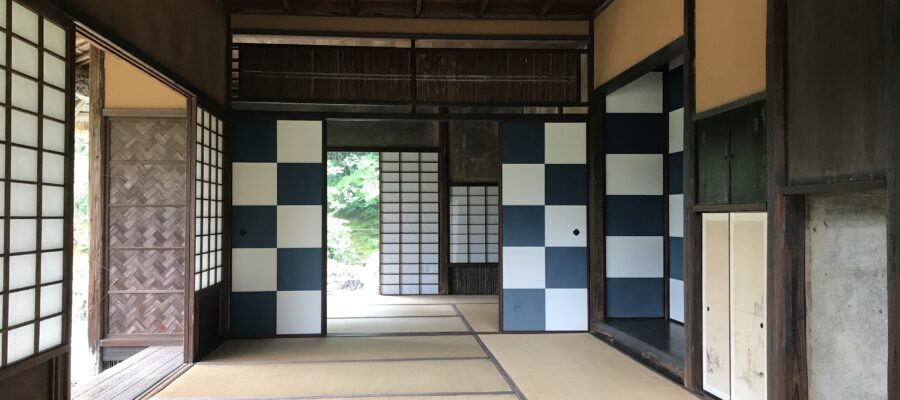桂離宮を見ずに日本庭園は語れない
桂離宮を見ずに日本の庭園は語れないと聞いて、ついにやって来ました。今はインターネットで予約できるので、時間に余裕があれば、特に一人で申し込む場合、意外と簡単に予約ができます。訪問当日は雨でしたが、雨ならではの良さも味わうことができました。ご存知のように、桂離宮は、後陽成天皇の弟、八条宮初代智仁親王により、宮家別荘として創建され、その息子の二代智忠親王も増築に取り組まれた庭園です。詳細は、各自お調べいただくことにして、今回は、見学コースを案内された順で御紹介します。最初は御幸門です。後水尾上皇をお迎えするのに作られたと伝えられます。その前の道も細かい敷石が敷き詰められています。
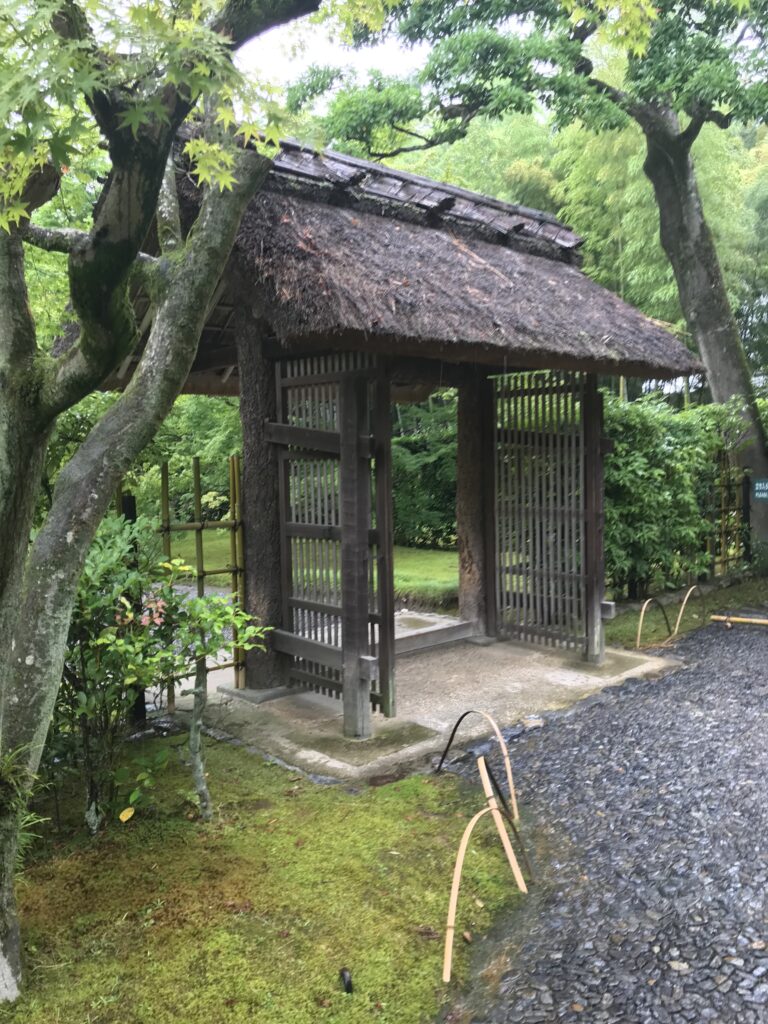
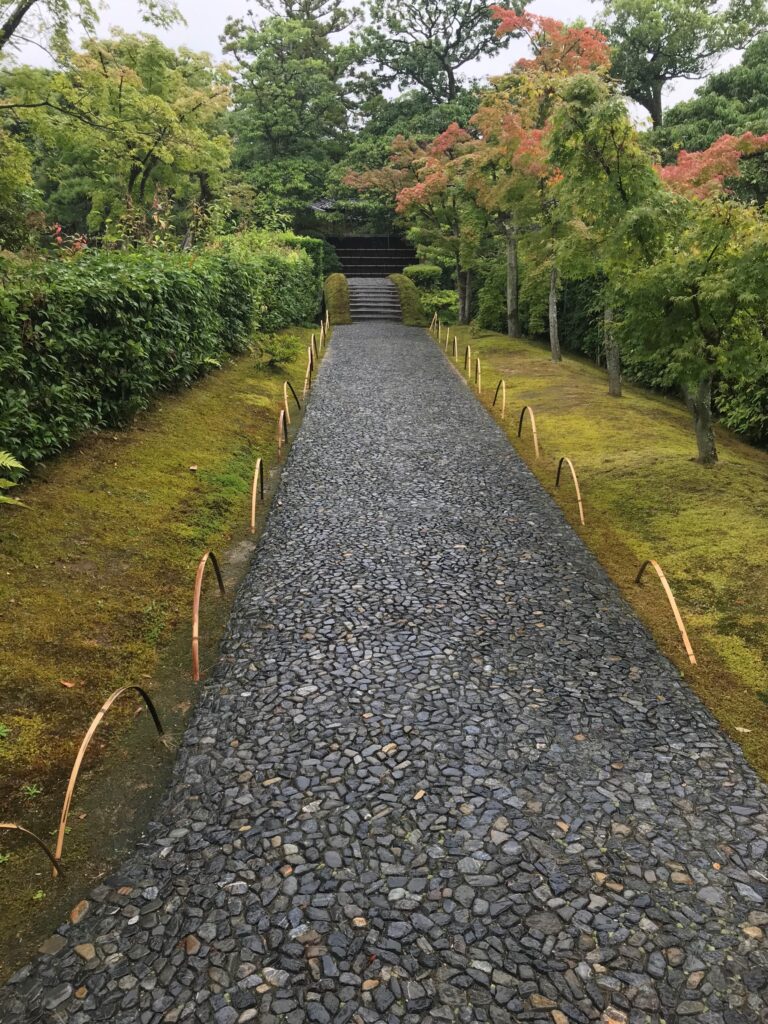
雨に打たれながら回遊開始
雨に打たれながら池の周りを回遊していきます。途中、うつむき加減の可愛い灯篭に出会ったり、ソテツが植えられていたりします。江戸時代に鎖国をするまでは、西欧から様々な影響を受けていますが、庭園にもその影響があると聞いています。土橋に続く道が遠近法を用いて、より遠くに見せていたり、ソテツが植えられているのもその影響のようです。
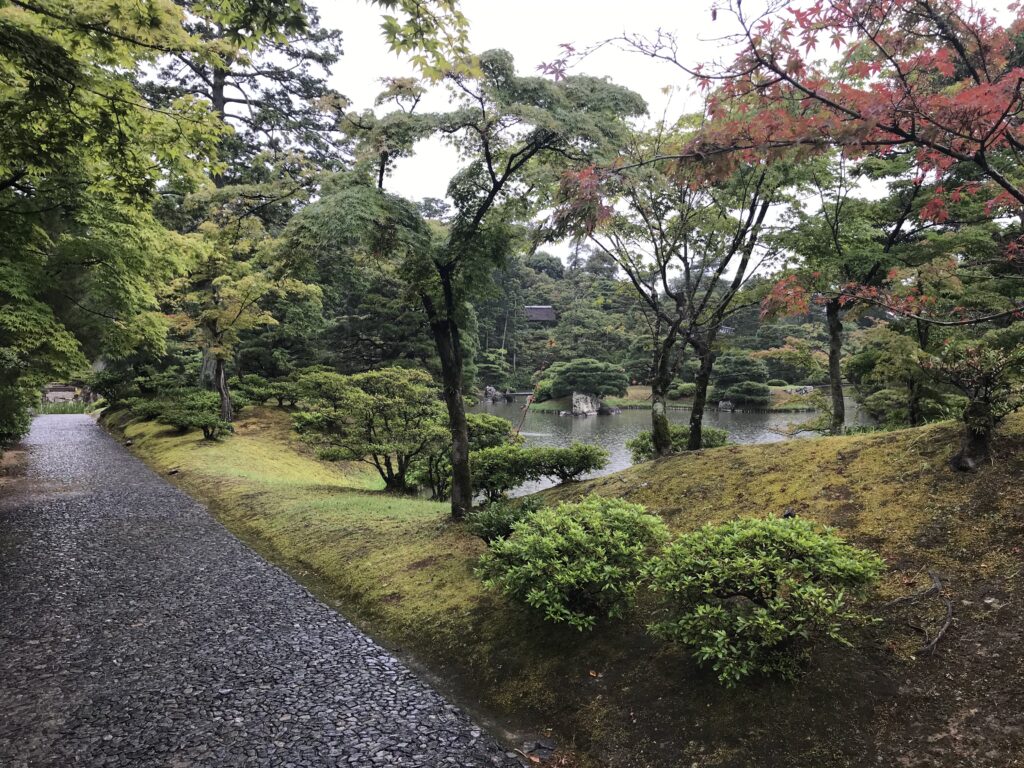
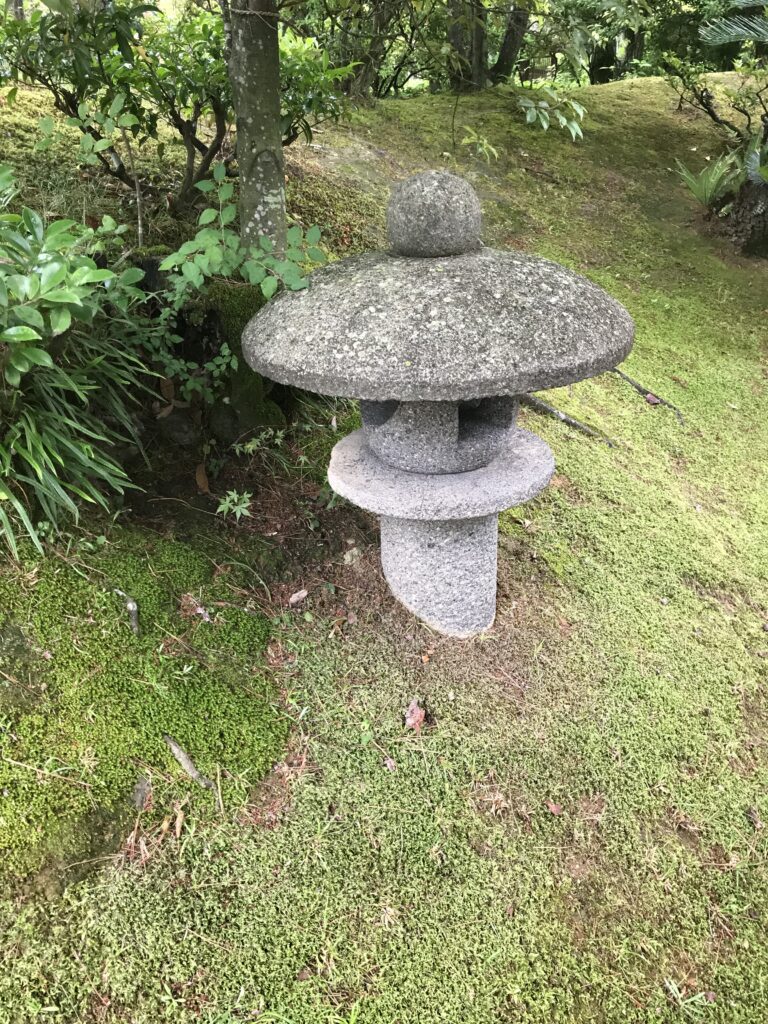
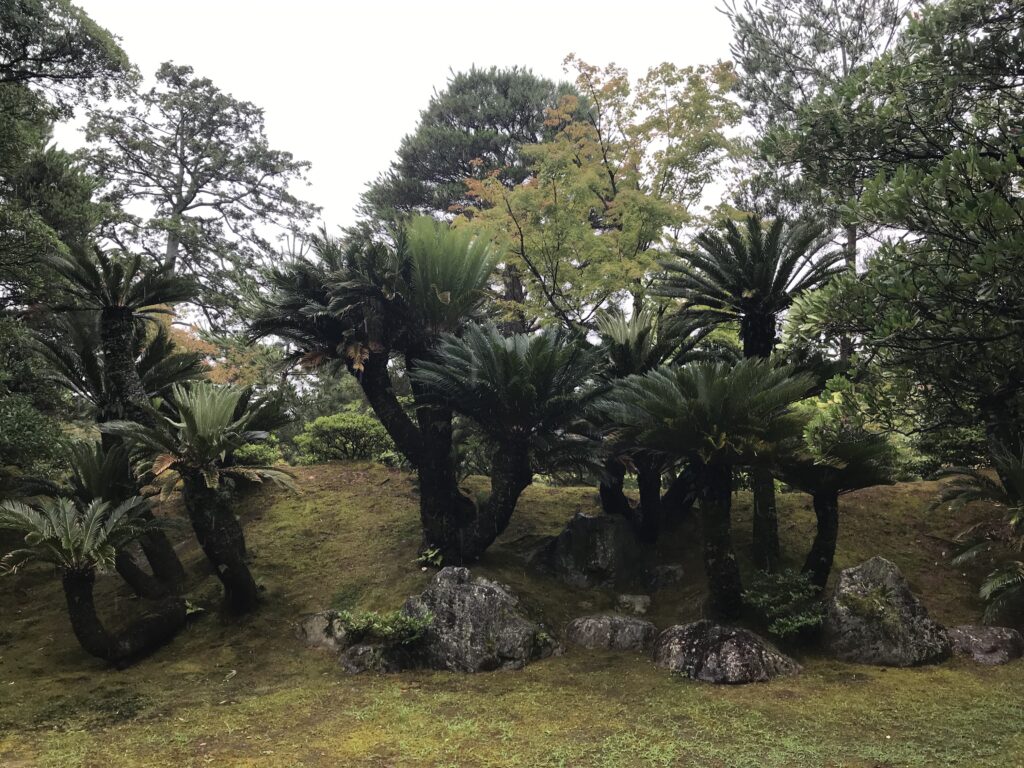
少し歩くと外腰掛に着きました。トイレも付いていて、これから訪れる茶室、松琴亭の待合い腰掛です。茅葺屋根と皮付丸太の柱で構成される素朴な建物ですが、その前の述べ段がセンス抜群です。真行草で言えば、行のスタイルでしょうか、石の色もそれぞれ異なっています。雨に濡れているため、石に艶が出ていてすごく格好いいデザインです。
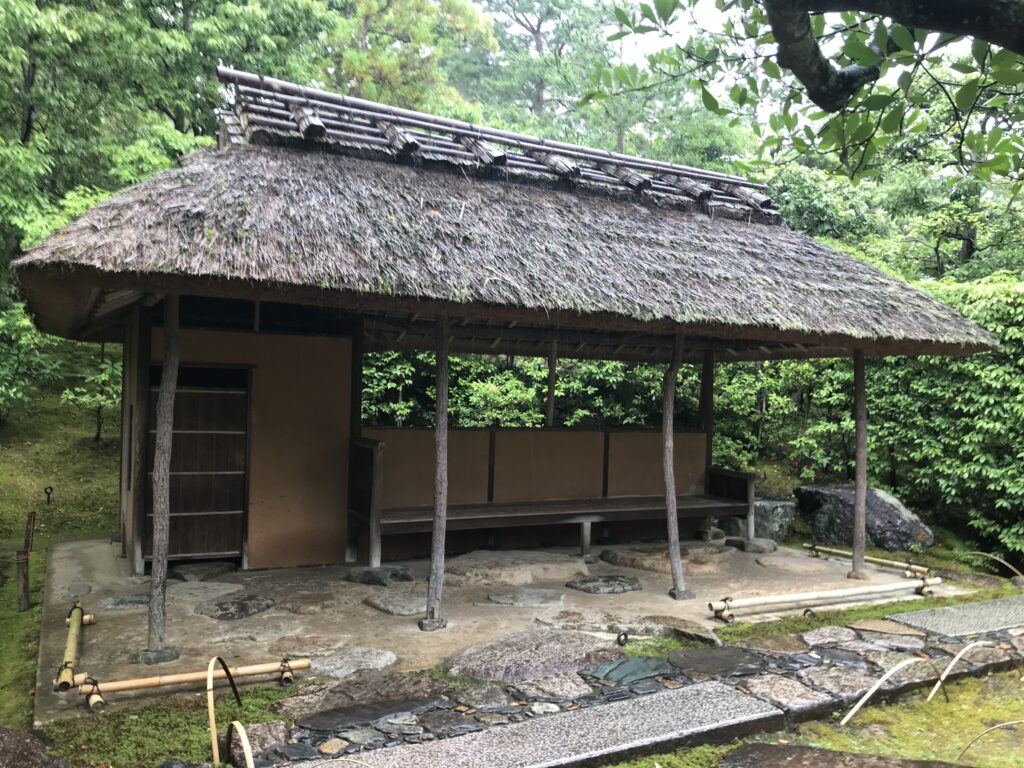
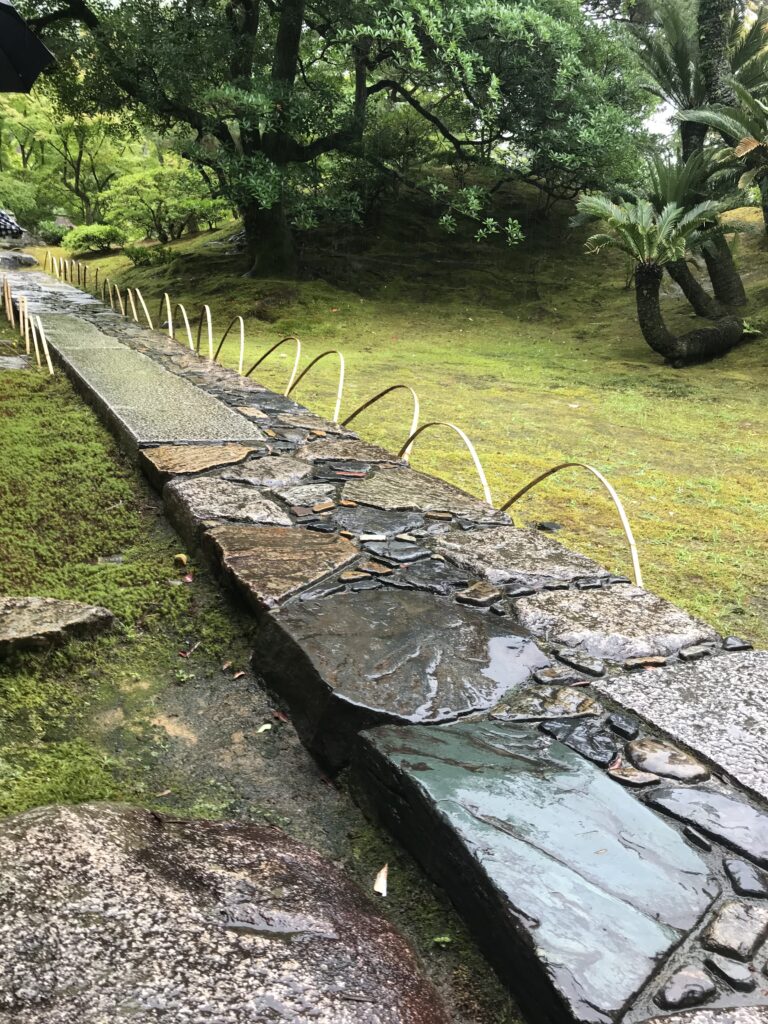
松琴亭へは前途多難
ここから松琴亭に向かいますが、そう簡単には行けません。途中、池に阻まれながら、黒く扁平な石が敷き詰められた州浜越しに、天橋立に見立てた石橋が見えます。州浜の先には岬灯篭がちょこんと立っていて、ミニチュアの海の景観を演出しています。
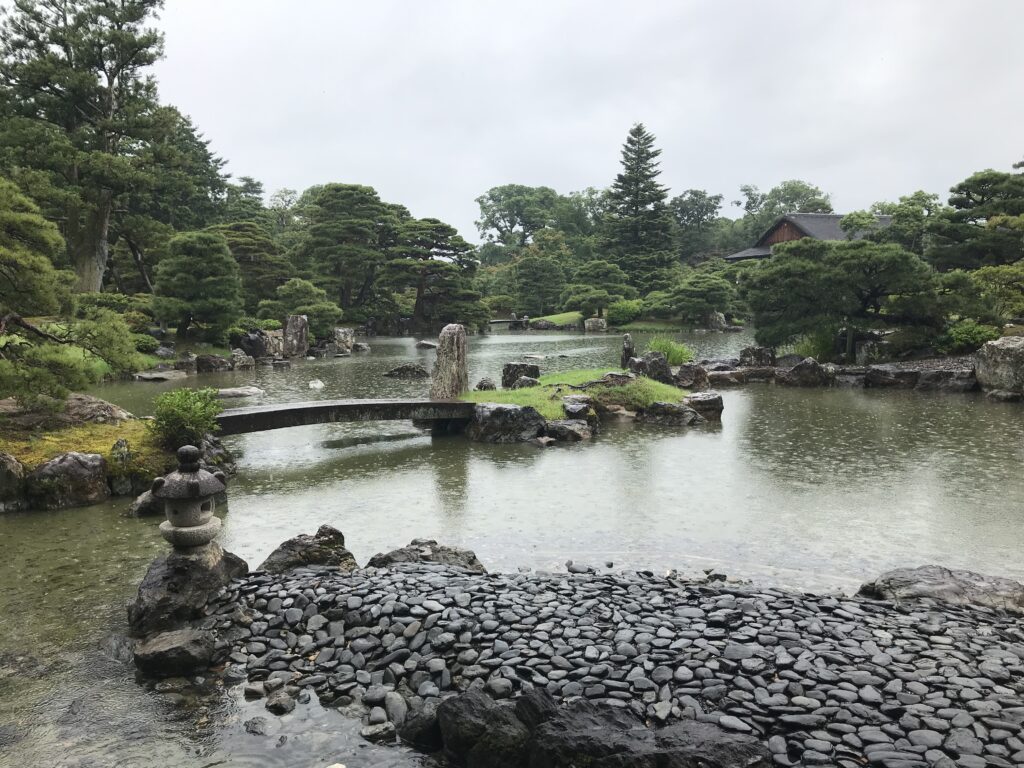
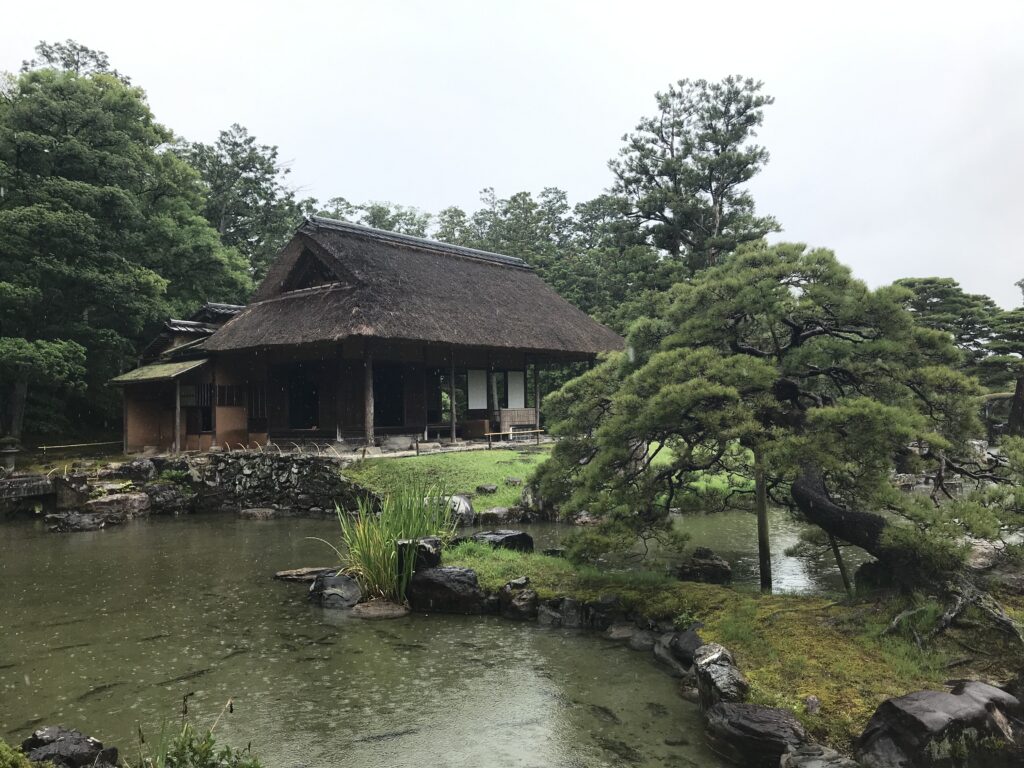
さあ、いよいよこの海を渡ります。ただし、向こう岸へ行くには平均台のような細い一本の石橋を渡る必要があります。雨に濡れているので滑りやすい、スリリングな経験でした。参加者全員、海に落ちることなく無事通過しました。
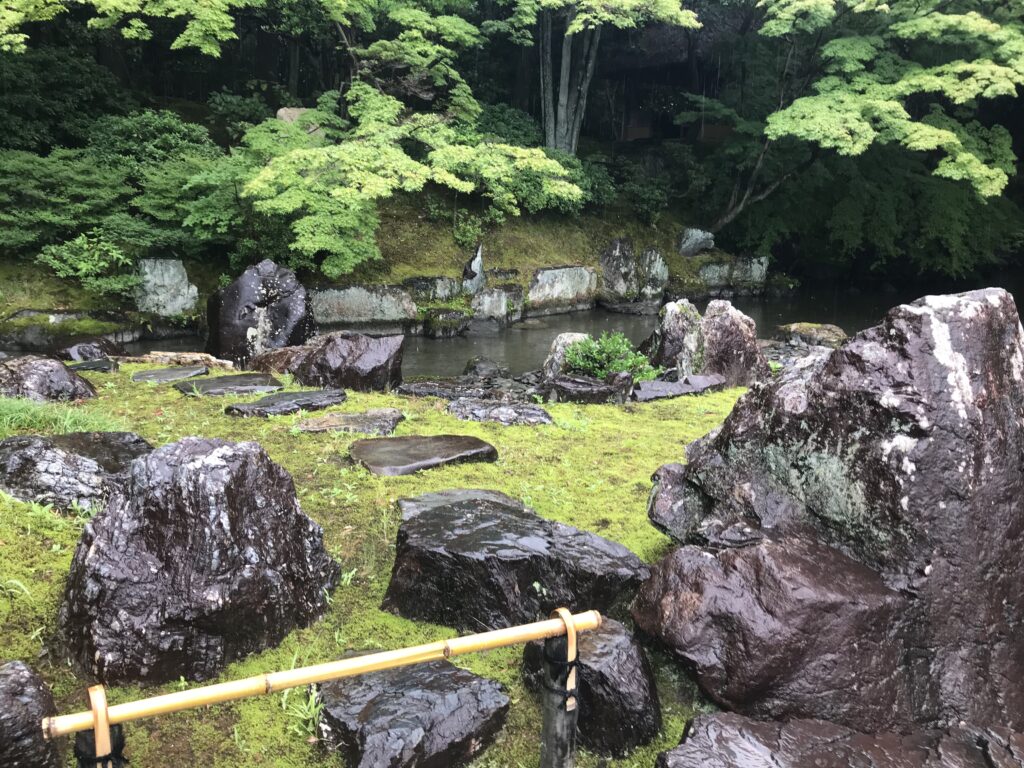
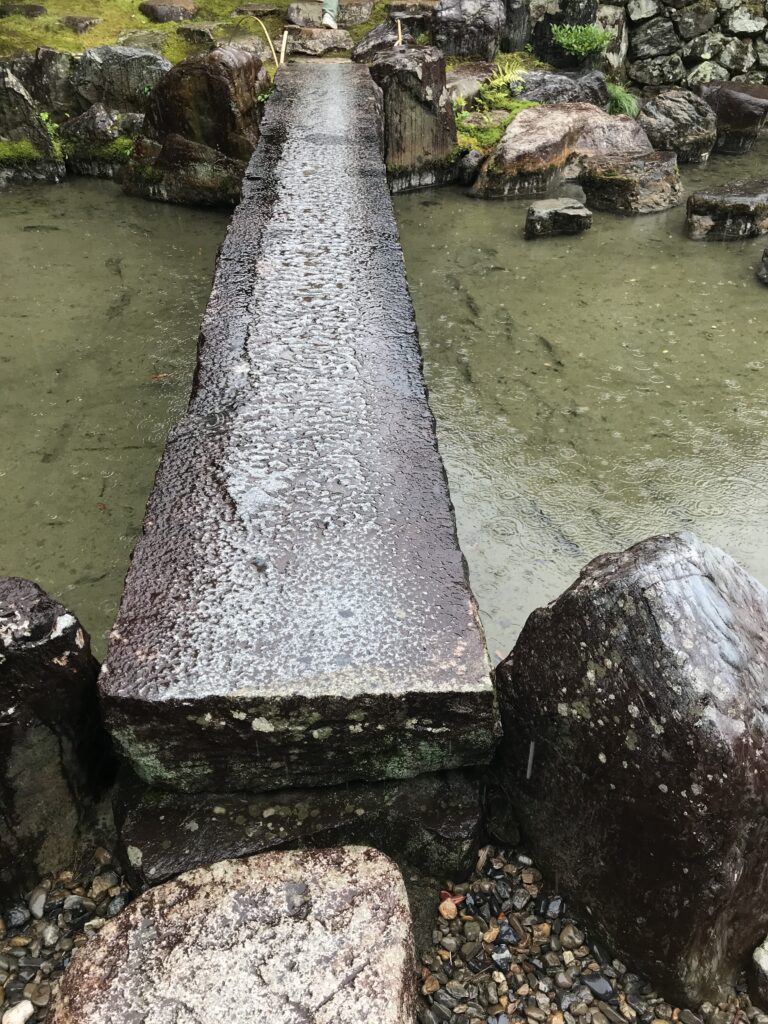
松琴亭は、桂離宮で最も格の高い茅葺入母屋造りの茶室です。一番有名なのは、室内の襖のデザインでしょう。青と白の大胆な市松模様が目を引きます。昔の時代を考えると、どうしても、わびさび文化や江戸時代の質素倹約に影響されて地味な印象を持つのですが、もともと日本人は、何百という自然の色を生活に取り込んでいたので、当時の感覚でも、それほど奇抜ではなかったのかも知れません。一息ついて、次に進みます。(つづく)
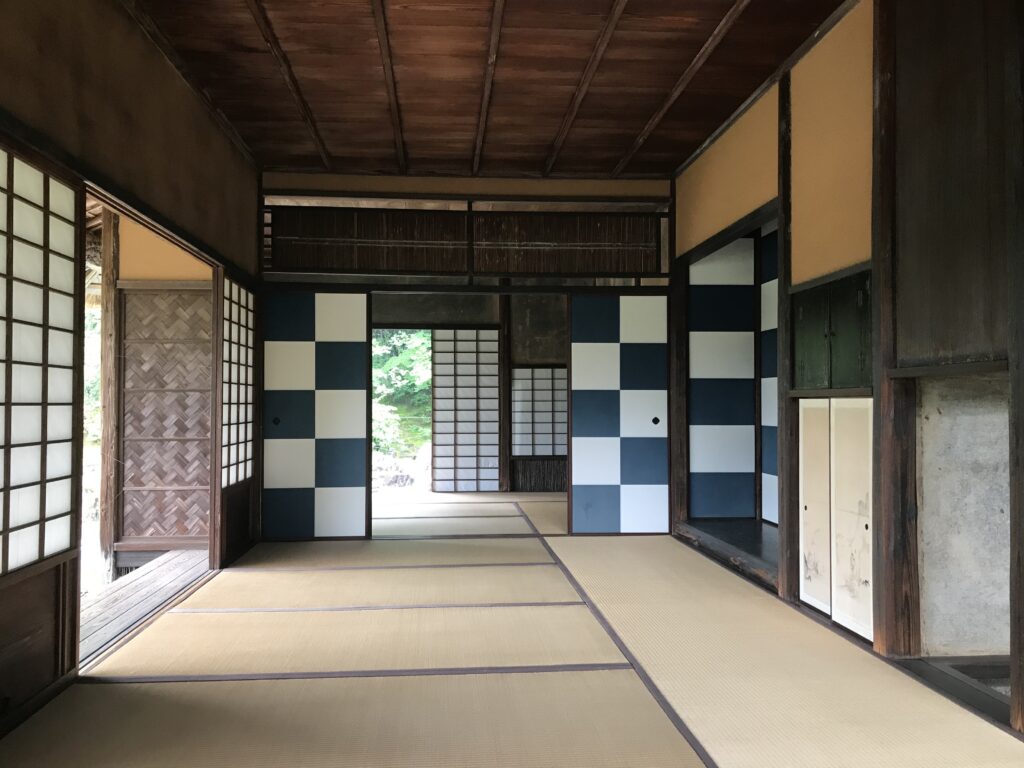
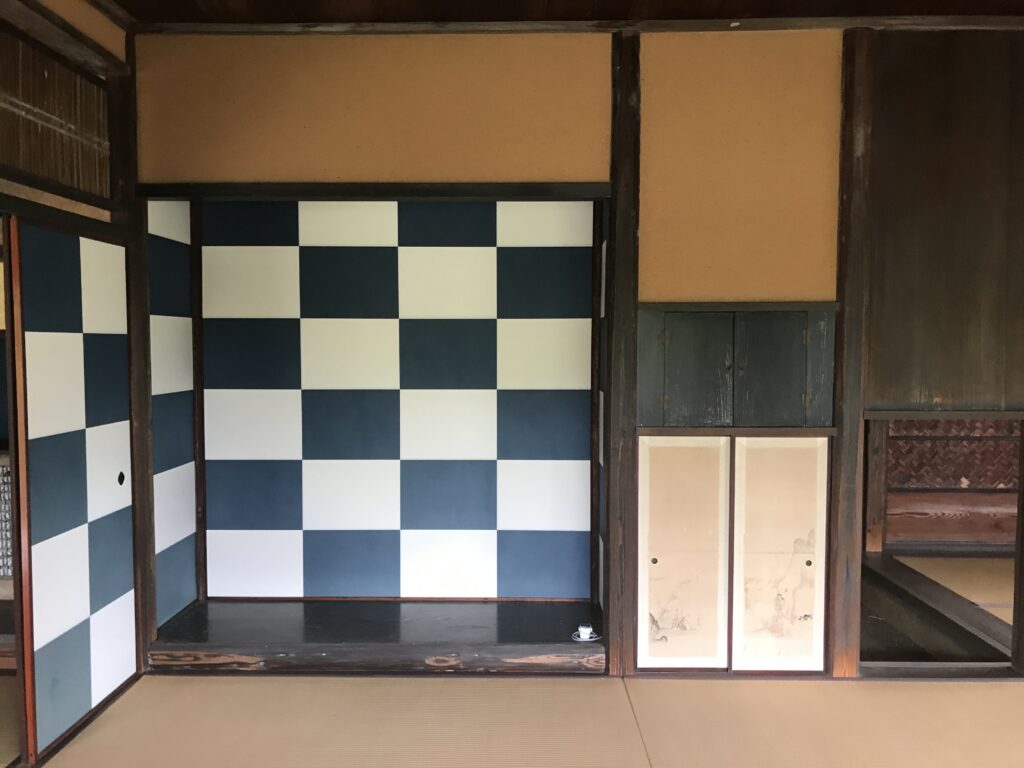
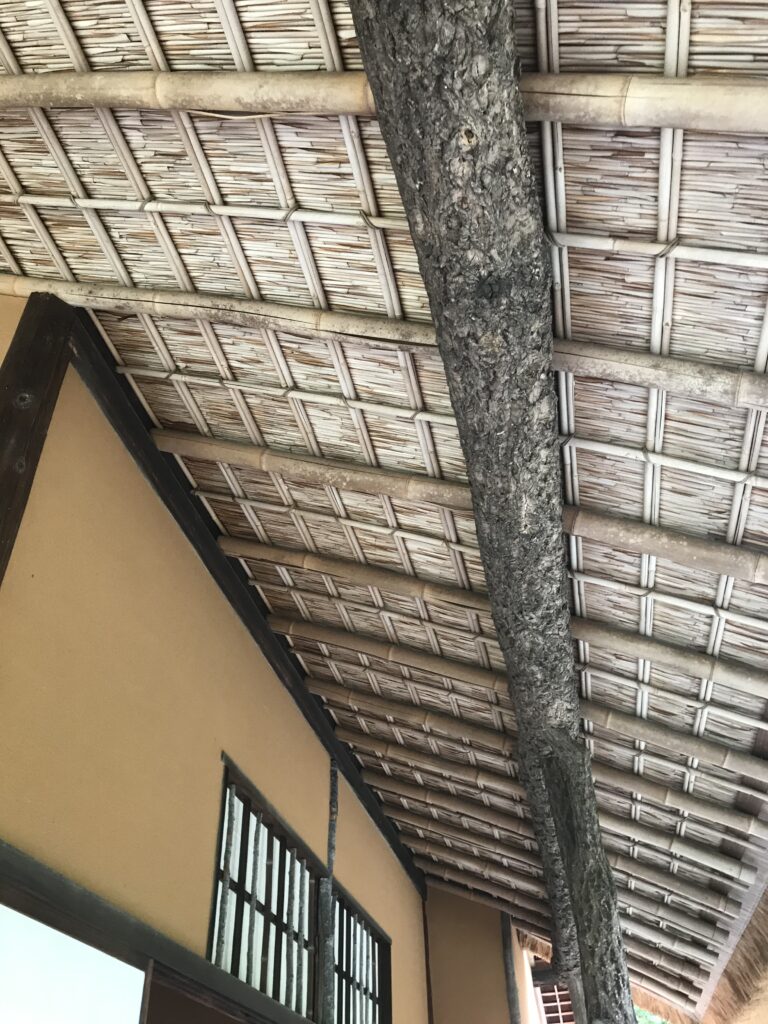
桂離宮が紹介されている書籍
宮本健次さんの「【図説】日本庭園のみかた」に桂離宮が解説されています。西洋からの影響について説明をされています。
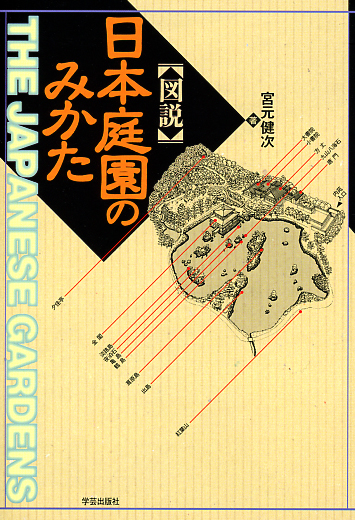
価格:2,090円
(2021/6/1 14:05時点)
感想(1件)
Katsura Rikyu ① from Miyuki Gate to Shokin-tei (English)
You can’t talk about Japanese gardens without seeing Katsura Rikyu.
I heard that man can’t talk about Japanese gardens without seeing Katsura Rikyu, so I finally came. Nowadays, I can make reservations online, so if I have enough time, it is surprisingly easy to make a reservation, especially if you are applying alone. It was raining on the day of my visit, but I was able to enjoy the advantages of the rain. As you may know, Katsura Rikyu was built as a palace villa by Emperor Go-Yozei’s younger brother, Prince Tomohito I of Hachijo Miya, and his son, Prince Tomotada II, also worked on expanding the garden. I’ll leave you to look up the details on your own and introduce the tour course in the order in which I was guided. The first stop was the Miyuki Gate. It is said to have been constructed to welcome retired Emperor Go-Mizuno. The path in front of it is also paved with fine paving stones.
Start migrating while being drenched by the rain
I walked around the pond, getting drenched by the rain. On the way, I came across some cute lanterns and cycads planted along the way. Before the isolation of Japan in the Edo period, the country was influenced in many ways by the West, and I was told that the garden was also influenced by the West. The path leading to the earthen bridge uses perspective to make it appear farther away, and the planting of cycads seems to be a result of this influence.
After a short walk, I arrived at the outside sitting area. That was the waiting area for the tea ceremony room the guests were going to visit, Shokin-tei, which also had a toilet. It was a simple building with a thatched roof and barked log pillars, but the extended steps in front of it were outstanding. The stones were of different colors. The stones were all different colors, and because they were wet from the rain, they had a very nice shine to them.
The road to Shokin-tei was hard.
From here, I headed for Shokin-tei, but it was not so easy to get there. On the way, blocked by a pond, I could see a stone bridge resembling Amanohashidate over a suhama beach of flat black stones. At the end of the suhama beach, a cape lantern stood on its own, creating a miniature seascape.
It was time to cross the sea. However, to get to the other side, I needed to cross a single narrow stone bridge that looked like an averaging platform. It was a thrilling experience as it was slippery and wet from the rain. All participants passed safely without falling into the sea.
Shokin-tei is the most prestigious tea house in Katsura Rikyu, built in the thatched irimoya style. The most famous feature of the room is the design of the sliding doors. The bold checkered pattern of blue and white is eye-catching. When I think of the past, I tend to have a sober impression influenced by the wabi-sabi culture and the frugality of the Edo period, but the Japanese originally incorporated hundreds of colors from nature into their daily lives, so it may not have been so eccentric even in the sense of the time. Let’s take a break and move on. (To be continued)
Katsura Rikyu ① de Miyuki Gate à Shokin-tei (Français)
Vous ne pouvez pas parler de jardins japonais sans voir Katsura Rikyu.
J’ai entendu dire que l’on ne peut pas parler de jardins japonais sans voir Katsura Rikyu, alors je suis finalement venu. De nos jours, je peux faire des réservations en ligne, donc si j’ai assez de temps, il est étonnamment facile de faire une réservation, surtout si vous faites une demande seul. Il pleuvait le jour de ma visite, mais j’ai pu profiter des avantages de la pluie. Comme vous le savez peut-être, Katsura Rikyu a été construit comme une villa de palais par le frère cadet de l’empereur Go-Yozei, le prince Tomohito Ier de Hachijo Miya, et son fils, le prince Tomotada II, a également travaillé à l’expansion du jardin. Je vous laisse chercher les détails par vous-même et présente le déroulement de la visite dans l’ordre dans lequel j’ai été guidée. Le premier arrêt était la porte Miyuki. On dit qu’elle a été construite pour accueillir l’empereur retraité Go-Mizuno. Le chemin qui la précède est également pavé de fins pavés.
Commencer à migrer tout en étant trempé par la pluie.
J’ai fait le tour de l’étang, en me faisant tremper par la pluie. En chemin, je suis tombée sur de jolies lanternes et des cycas plantés le long du chemin. Avant l’isolement du Japon à l’époque d’Edo, le pays a été influencé à bien des égards par l’Occident, et on m’a dit que le jardin a également été influencé par l’Occident. Le chemin menant au pont de terre utilise la perspective pour le faire paraître plus éloigné, et la plantation de cycadées semble être le résultat de cette influence.
Après une courte marche, je suis arrivé au salon extérieur. C’était la salle d’attente pour la salle de cérémonie du thé que les invités allaient visiter, Shokin-tei, qui avait également des toilettes. C’était un bâtiment simple avec un toit de chaume et des piliers en rondins écorcés, mais les marches prolongées devant le bâtiment étaient remarquables. Les pierres étaient de couleurs différentes. Les pierres étaient toutes de couleurs différentes, et comme elles étaient mouillées par la pluie, elles avaient un très bel éclat.
La route vers Shokin-tei a été difficile.
De là, je me suis dirigé vers Shokin-tei, mais ce n’était pas si facile d’y arriver. En chemin, bloqué par un étang, j’ai pu voir un pont de pierre ressemblant à Amanohashidate au-dessus d’une plage de suhama de pierres noires plates. Au bout de la plage suhama, une lanterne de cape se dressait seule, créant un paysage marin miniature.
Il était temps de traverser la mer. Cependant, pour atteindre l’autre côté, je devais traverser un seul pont étroit en pierre qui ressemblait à une plate-forme de moyenne altitude. C’était une expérience palpitante car le pont était glissant et mouillé par la pluie. Tous les participants sont passés en toute sécurité sans tomber dans la mer.
Shokin-tei est la maison de thé la plus prestigieuse de Katsura Rikyu, construite dans le style irimoya au toit de chaume. La caractéristique la plus célèbre de la pièce est le design des portes coulissantes. L’audacieux motif en damier bleu et blanc attire le regard. Lorsque je pense au passé, j’ai tendance à avoir une impression de sobriété influencée par la culture wabi-sabi et la frugalité de la période Edo, mais à l’origine, les Japonais incorporaient des centaines de couleurs issues de la nature dans leur vie quotidienne, si bien que ce n’était peut-être pas si excentrique, même au sens de l’époque. Faisons une pause et passons à autre chose. (A suivre)
